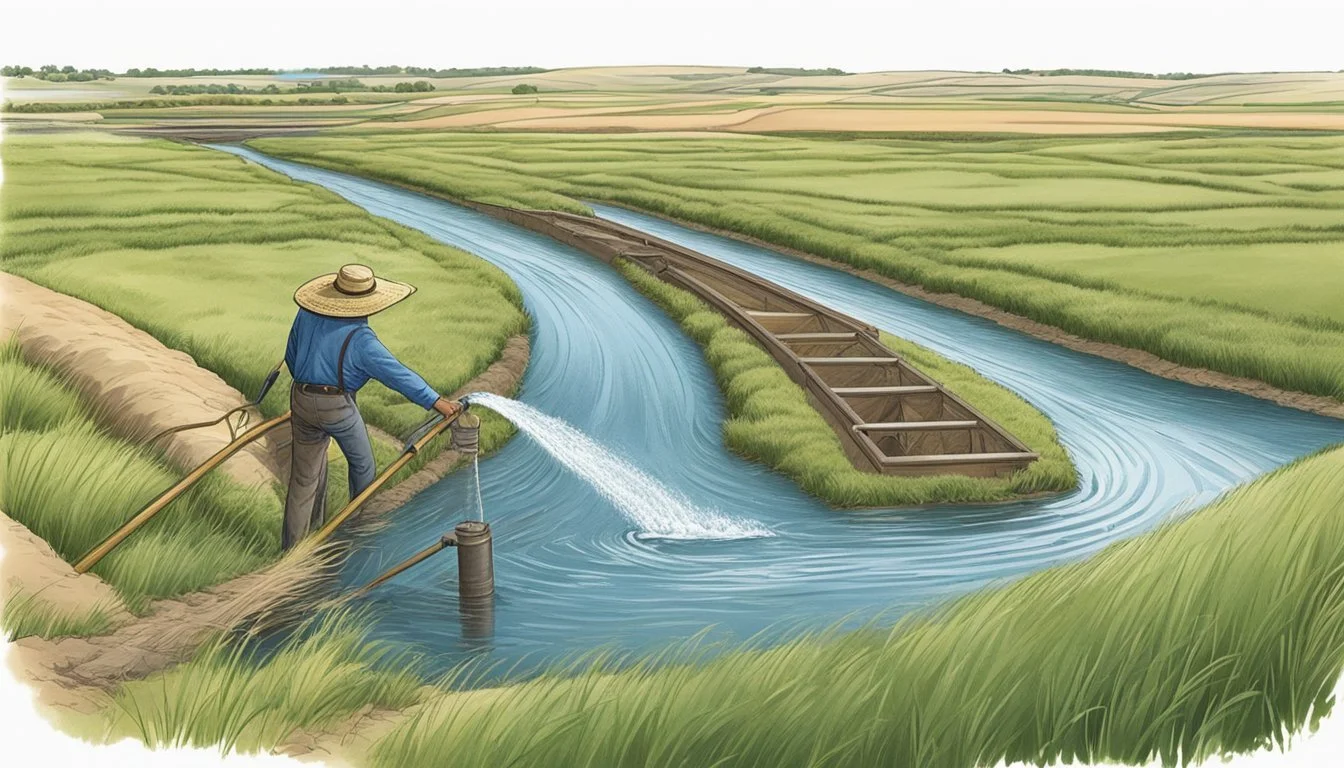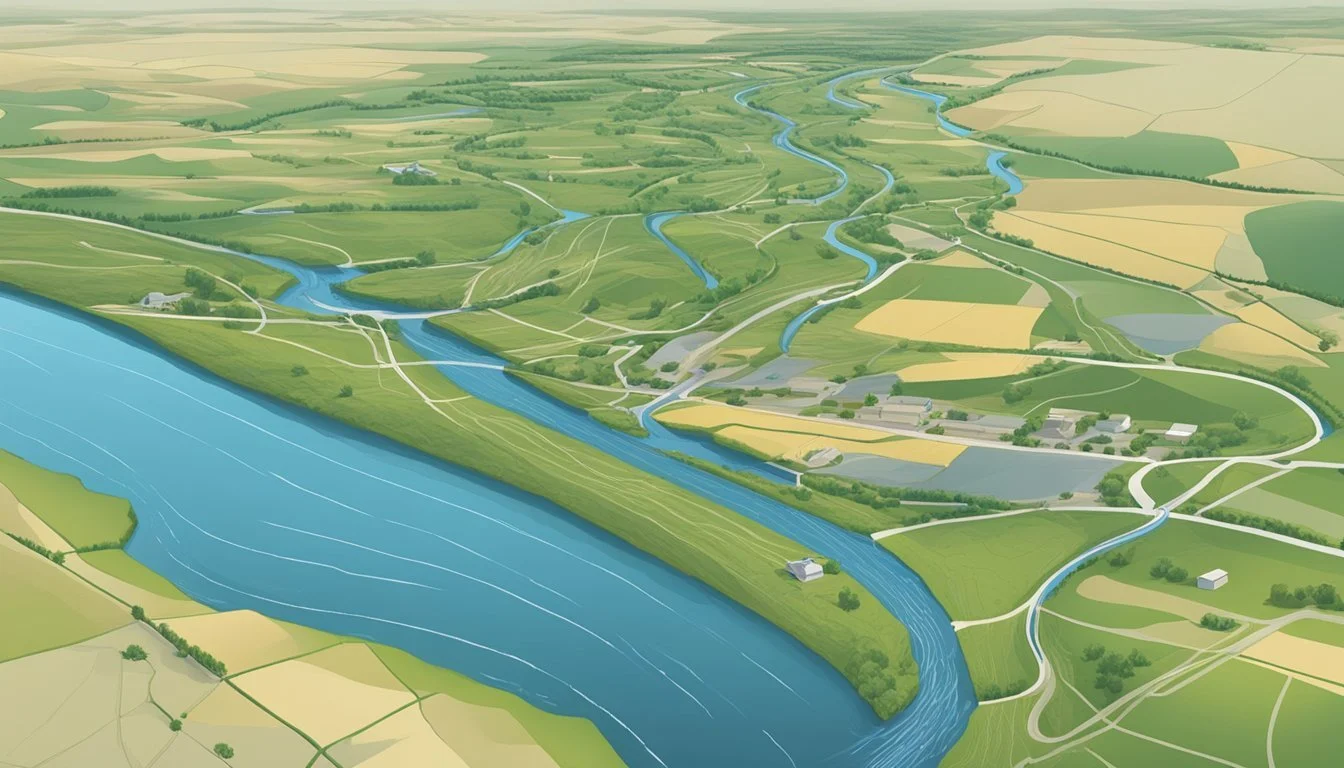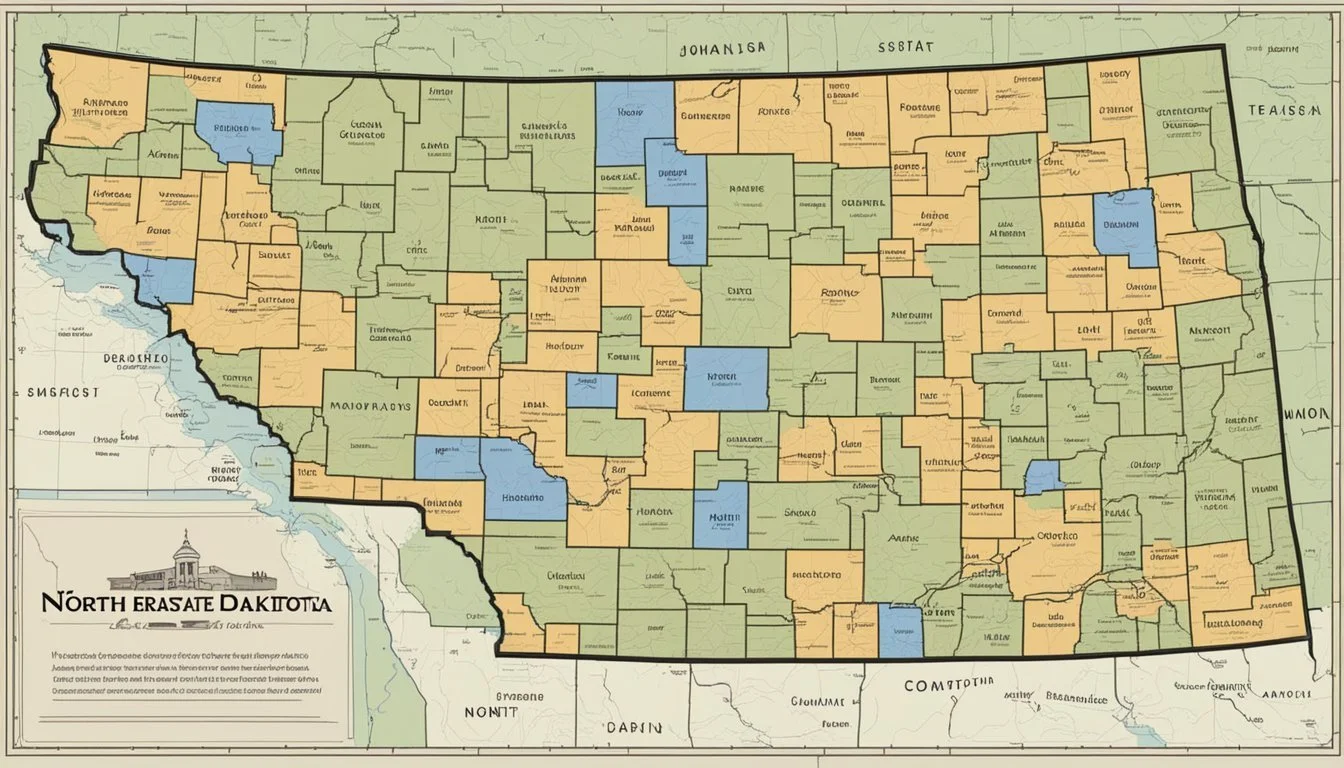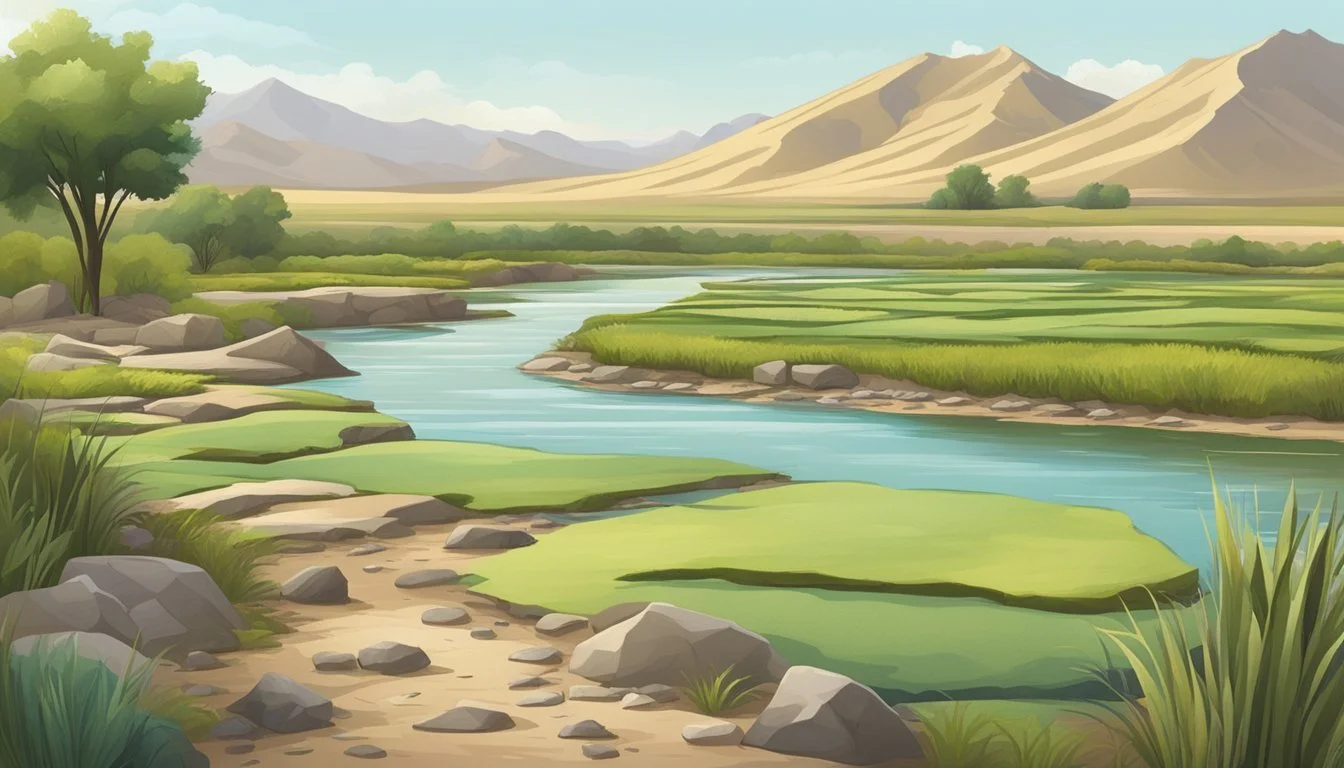Water Rights in North Dakota
Navigating Legal and Environmental Challenges
Water rights in North Dakota are governed by a framework that emphasizes the sustainability and management of the state's water resources. The doctrine that serves as the cornerstone of water law in North Dakota is Prior Appropriation, which is different from Riparian rights that are common in eastern states. Under this system, water rights are granted based on a priority of beneficial use, meaning those who first put the water to beneficial use have senior rights to access that water over later users.
The state's agencies, particularly the Water Appropriation Division of the North Dakota State Water Commission, are tasked with overseeing the distribution and regulation of water rights. Applicants must navigate a strict legal process to obtain permits, which are essential for legal water use. These laws are detailed within Article XI of the North Dakota Constitution and Chapter 61 of the North Dakota Century Code. The rigorous enforcement of these laws ensures that the use of water resources aligns with the needs of the populace and respects the rights of prior users.
Such water management practices in North Dakota are crucial to the welfare of its citizens, and they impact various aspects of life including agriculture, industry, and environmental conservation. The state's approach to water rights reflects a balance between development and conservation, shaping how water is allocated among competing demands while safeguarding the rights of those with established claims.
Historical Context of Water Rights
In North Dakota, water rights have evolved through legislative actions and judicial interpretations. They are deeply rooted in common law, riparian doctrine, and later, the western doctrine of prior appropriation.
Origins and Development
The traditional approach to water rights in North Dakota is founded on riparian principles, originating from English common law. Under the riparian doctrine, landowners whose property abuts a watercourse have the right to make reasonable use of the water. However, as settlers moved westward, the limitations of this doctrine in arid regions became apparent, prompting a shift towards the doctrine of prior appropriation.
This prior appropriation doctrine, often summarized by the phrase "first in time, first in right," allocates water rights based on chronological order of use. These rights are maintained through beneficial use and are independent of land ownership, reflecting the scarcity of water resources in western states.
Notably, this shift was influenced by the mining industry and agricultural demands, where having a secure water supply was critical. In fact, certain water laws were initially codified to protect the needs of these sectors, reflecting the socio-economic priorities of the era.
The transformation of North Dakota's water law demonstrates congressional influence and local adaptation. It highlights the dynamic nature of how societies value and manage water.
North Dakota Century Code
The North Dakota Century Code contains statutes that are specific to the state's water laws. Chapter 61-01 defines "water rights" and establishes the framework for their administration, reinforcing the state's reliance on the prior appropriation system.
Section 61-01-01: Clarifies the definition of waters subject to appropriation.
Section 61-01-15: Describes the state's authority over water rights.
These sections affirm the state's commitment to managing water as a public resource while recognizing individual rights to its use based on historical precedence.
Legislation enshrined in the North Dakota Century Code also addresses the interplay between water rights and other land management concerns, like drainage laws Drainage Law in North Dakota: An Overview. Such integration underscores how water law is interconnected with broader land use policies and rights.
Legal Framework and Administration
In North Dakota, water rights and permit issuance are strictly regulated under a legal framework designed to ensure sustainable resource management and the protection of existing rights. The process involves the coordination of state agencies and legal oversight to maintain orderly water usage.
State Engineer and Water Appropriation Division
The State Engineer's Office, along with the Water Appropriation Division, are central to the administration of water rights in North Dakota. They are responsible for carrying out the necessary administrative procedures related to water permit applications, as well as the development and maintenance of a comprehensive system for water permit records. Together, they conduct analyses and provide recommendations to the State Engineer regarding water permit applications to ensure compliance with state laws and policies.
Permitting Process for Water Rights
The process of acquiring a water right in North Dakota involves submitting an application to the Water Appropriation Division where it is reviewed for its potential impact on existing water rights and environmental considerations. North Dakota's water law is codified in Chapter 61-04 of the North Dakota Century Code, which outlines the statutes for acquiring water rights, reflecting the legal intricacies of water usage within the state.
Role of the Supreme Court
In disputes concerning water rights, the Supreme Court of North Dakota plays a definitive role. As the highest court in the state, it resolves conflicts arising from water laws and appropriation decisions. The court's decisions are pivotal in interpreting the scope and extent of water rights, thereby setting legal precedents that influence future water law administration and enforcement in North Dakota.
Water Rights and Usage
In North Dakota, managing water resources effectively hinges on understanding the system of water rights and usage, which is grounded in legal frameworks and practical requirements for various applications such as agriculture and livestock management.
Prior Appropriation Doctrine
The cornerstone of North Dakota's water rights is the Prior Appropriation Doctrine, a principle dictating that rights are fundamentally determined by the chronological order of water permits. Those who apply first and adhere to specified regulations gain priority in accessing water resources. This doctrine operates under the adage "first in time, first in right," reflecting the structured hierarchy of water allocation within the state.
Beneficial Use and Permitting
Beneficial Use is a required showing for obtaining a water permit in North Dakota and represents a condition that the water must be used for a purpose considered beneficial by law, such as agriculture, municipal, and industrial needs. Applying for a permit is a compulsory step before deploying water for beneficial use, and usage that exceeds 12.5 acre-feet annually must undergo this process to be legitimate. Permits are a formal acknowledgement and certification of one's right to use state water resources for their proposed beneficial use.
Water Rights for Agriculture
Agricultural water rights are paramount in North Dakota, where farmland and livestock represent critical sectors. Farmers require a water permit for irrigation and livestock purposes when their need surpasses the exempt usage limits. The allocation of water for agricultural use involves careful scrutiny to ensure that it aligns with beneficial use parameters, and is subject to the tenets of the Prior Appropriation Doctrine, denoting that older water rights have precedence over newer claims in times of scarcity.
Water Source Management
In North Dakota, water source management encompasses the strategic oversight of both surface and ground water. It ensures the sustainability of these critical resources while balancing the needs of residents, agriculture, and industry.
Surface Water and Ground Water
Surface water sources in North Dakota, including rivers and lakes, are managed to support various uses such as irrigation, municipal supply, and recreation. The state's surface water sources and their management are detailed by the North Dakota Water Managers Handbook. In contrast, ground water, which is found in aquifers below the earth's surface, is vital for domestic wells and supports the state's agricultural endeavors. North Dakota's ground water supplies and the responsibilities over them are systematically outlined to harmonize extraction with natural replenishment rates, preventing overuse.
Watershed and Water Infrastructure
The watershed approach in North Dakota integrates the management of water, land, and related resources within hydrological boundaries to maximize the economic and social welfare without compromising the sustainability of vital ecosystems. North Dakota's water infrastructure, including dams and reservoirs, plays a pivotal role in storing and managing water. The State Water Commission facilitates the development and maintenance of water infrastructure that efficiently serves urban and rural needs while preserving the health of the watershed.
Diversion and Water Transfer Projects
Diversion and water transfer projects in North Dakota are critical for distributing water where it is most needed, especially during times of drought. These projects, which involve the redirection of water from one watershed to another or within the same watershed, demand thoughtful planning and regulatory oversight. The State's permitting process ensures that these activities do not adversely affect the water rights of others or the environment, maintaining a fair and balanced use of the state's water resources.
Through effective management strategies, North Dakota maintains the function and health of its watersheds while ensuring that both surface water and ground water are used wisely, contributing to the state's long-term water security and resilience.
Interstate Water Compacts
Interstate Water Compacts are essential to managing shared water resources across state lines. These compacts serve as agreements between states to outline rights and responsibilities regarding the use and management of interstate waters.
Missouri River Basin Agreements
Missouri River. This river serves as a critical source of water for states like Montana, North Dakota, and South Dakota. States within the Missouri River Basin have entered into agreements to ensure that the water rights and usage are judiciously allocated and protected. These agreements address various concerns such as water supply, flood control, and environmental protection. Importantly, they facilitate collaboration among basin states to manage water resources sustainably.
Key concerns addressed within the basin's compacts include:
Allocation of water volumes
Water use priorities
Drought management strategies
Red River Valley Water Supply Project
The Red River Valley Water Supply Project exemplifies how interstate cooperation is pivotal in addressing regional water supply challenges. The project is a proactive measure to secure a sustainable water supply for the future, recognizing the shared needs and reliance on the Red River.
Objective: To supplement water supply during drought periods to communities and industries in the Red River Valley.
States involved: Primarily North Dakota, but also affecting water interests of Minnesota due to the river’s natural flow.
Through these compacts and projects, states like North Dakota demonstrate their commitment to responsible water resource management via legally binding agreements with neighboring states.
Environmental Impacts and Conservation
The management of water resources in North Dakota directly influences the local ecosystem's balance and the community's wellbeing. Efforts to maintain water quality and manage drought conditions are imperative for sustaining public health and the environment.
Water Quality and Public Health
In North Dakota, the quality of water is paramount for ensuring the health and safety of its residents. Contamination from agricultural runoffs poses a risk to groundwater and surface water. Agencies like the U.S. Environmental Protection Agency are instrumental in implementing and enforcing standards to safeguard these waters. Proper treatment and removal of contaminants are conducted to prevent negative impacts on both public health and aquatic ecosystems.
Drought Management and Response
Droughts present significant challenges, affecting agriculture, water supply, and the quality of life in North Dakota. Drought management strategies include monitoring water levels and implementing conservation practices. Efficient water use and drought-response plans are crucial, as they ensure the prudent management of water resources during times of scarcity.
Clean Water Initiatives
North Dakota undertakes various clean water initiatives to protect and improve its waterways. Investments in infrastructure, as announced by initiatives like those from President Biden's administration, focus on upgrading water systems for long-term sustainability. Conservation activities, such as protecting wetlands and establishing buffer zones, actively contribute to maintaining the health of water systems.
This targeted approach to addressing environmental impacts stemming from water use and promoting conservation practices shows North Dakota's commitment to maintaining the delicate balance between human activity and natural resources.
Water Rights and Economic Development
In North Dakota, water rights play a significant role in the state's economic progress, influencing sectors from mining to tourism. Ensuring a balance between water sustainability and economic needs is a key focus for the state.
Mining and Industrial Use
In the mining sector, water is an essential resource for processes like mineral extraction and refining. North Dakota's guidelines, grounded in common law and riparian doctrine principles, dictate the usage of water for these purposes. The state prioritizes the sustainability of the resource while protecting established water rights, which is vital for the continuation and expansion of industrial activities.
Recreational Opportunities and Tourism
Water rights also influence recreational opportunities, with emphasis on tourism, benefiting from North Dakota's water bodies. As such, the state has advanced policy decisions to manage their water resources that support tourism—a sector that relies heavily on the usage and quality of water in lakes and rivers to attract visitors for activities like fishing, boating, and water sports.
Funding and Grants
The economic impact of water management is supported through funding and grants. North Dakota provides updated project information crucial for planning and supporting high-priority water needs. This reflects the state's intent to plan for and support water resource development with a focus on catering to both current and future demands, a step that directly fuels various economic aspects related to water use.
Entities and stakeholders are offered guidance on securing funds and adhering to water laws, ensuring the efficient utilization of grants for developmental initiatives tied to water resources.
Regulatory Bodies and Enforcement
In North Dakota, water rights and resources are managed by established regulatory bodies with well-defined roles dedicated to ensuring the sustainability and fair allocation of water. The enforcement of water laws shields both the environment and the rights of individuals and entities within the state.
Department of Water Resources
The Department of Water Resources (DWR) plays a pivotal role in the administration and enforcement of water laws in North Dakota. They focus on maintaining the sustainability of the state's water resources while protecting established water rights. Key responsibilities of the DWR include:
Management of Use: Overseeing water permits to regulate the appropriation of state water resources.
Enforcement: Implementing North Dakota's water laws and policies.
Support for Water-Related Projects: Facilitating investigation, planning, and construction to develop water-related projects across the state.
U.S. Army Corps of Engineers
The U.S. Army Corps of Engineers (USACE) is a federal entity that operates nationwide, including within North Dakota, to deliver vital public and military engineering services. In relation to water resources, their duties encompass:
Infrastructure: Designing and constructing dams, dikes, and other water control structures.
Flood Risk Management: Working to mitigate the impact of floods through structural and non-structural measures.
Environmental Stewardship: Ensuring that projects under their purview meet environmental regulations.
Both the Department of Water Resources and the U.S. Army Corps of Engineers are committed to managing water resources efficiently, upholding laws and policies to promote the well-being and prosperity of North Dakota's residents and natural habitats.
Public Involvement and Policy
In North Dakota, public involvement is a fundamental aspect of water rights policy creation and enforcement. The process is designed to incorporate the voices of individuals and communities, ensuring that water management strategies reflect the collective interests and concerns.
Public Comment Process
The Public Comment Process allows residents to voice their opinions and provide feedback on proposed water rights regulations and policies. When a new policy is under consideration, the Department of Water Resources publishes notices inviting comments for a specified period. During this time, stakeholders can submit their perspectives via email, mail, or during public hearings. The input received is then considered by policymakers to help shape the final decisions.
Submission Methods:
Email: Residents may send their comments electronically.
Mail: Traditional mail is an alternative for submitting written comments.
Public Hearings: In-person meetings where oral comments are recorded.
Community Engagement in Water Planning
Community Engagement in Water Planning involves proactive outreach to ensure that the needs and preferences of local populations are accounted for in water resource management. The department organizes workshops and information sessions to educate the public on water issues and gather community input. This collaboration between the state and its residents ensures policies are robust and community-centered.
Engagement Activities:
Workshops: Interactive sessions where community members learn and discuss.
Information Sessions: Presentations that update the public on current water issues and plans.
Frequently Asked Questions
Managing water resources effectively is crucial for sustainability and legal compliance. In North Dakota, the Department of Water Resources is responsible for overseeing allocation and usage. This section addresses common queries related to water rights in the state.
How are water rights allocated and managed by the North Dakota Department of Water Resources?
In North Dakota, water rights are allocated and managed by the state's Department of Water Resources. They ensure the sustainability of water resources, administer permits, and handle related enforcement actions.
What legal framework governs the issuance of water permits in North Dakota?
The legal framework for the issuance of water permits is detailed under state law, governed by the Water Appropriation Division of the North Dakota Department of Water Resources. It establishes the regulations for water use and upholds the rights of permitted users.
What are the implications of riparian rights for North Dakota landowners?
Riparian rights confer on North Dakota landowners the privilege to use water from a contiguous body of water. However, these uses must comply with regulations and cannot infringe on the rights of other users, emphasizing fair use and sustainability.
How does the North Dakota water permit system work?
The North Dakota water permit system requires individuals and entities to obtain permits for the use of water resources in quantities beyond 12.5 acre-feet. This process includes submitting applications, adherence to guidelines, and ongoing water use monitoring.
How can individuals and businesses access the North Dakota Water Well map?
To access the North Dakota Water Well map, individuals and businesses can consult the state's digital resources provided by the Department of Water Resources, which offer detailed mapping and information on water wells across the state.
What procedures must be followed to legally drill a water well in North Dakota?
For legally drilling a water well in North Dakota, landowners must secure the necessary permits and adhere to both state and local regulations. It is important to consult the Department of Water Resources to ascertain the legal requirements and ensure correct procedures are followed.








